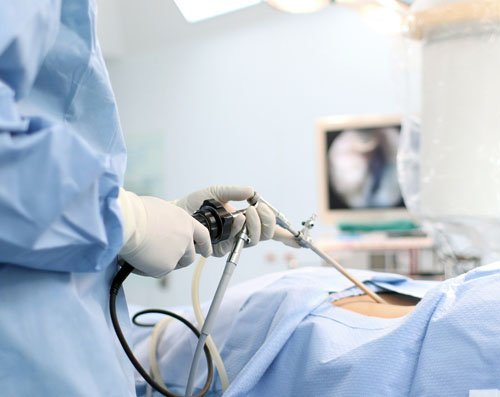
Video-thoracoscopy is a form of surgical access to the chest with small incisions. It is also known as video-assisted thoracoscopic surgery or VATS (Video-Assisted Thoracoscopic Surgery). It allows a wide variety of pleural and pulmonary surgeries. Through these small incisions, special instruments and optics are placed that allow working within the thorax. All surgery is performed by observing on a screen. Currently, it is about making a single incision through which one works inside the thorax, calling this technique uniportal videothoracoscopy.
What benefits does videothoracoscopy have?
The benefits of videothoracoscopy have to do with the fastest recovery and the least postoperative pain. In addition to using small incisions, it offers an aesthetic benefit.
In which cases can videotoracoscopy be used?
There are many indications of videotoracoscopy. A wide variety of thoracic surgeries can be performed in this way. Initially it was used to perform surgeries on the pleura (the pleura is a thin sheet of tissue that lines the ribs inside the thorax). As experience was gained with this surgery, it was also used to perform lung surgery. With this surgery you can remove lung nodules, perform lung biopsies and even perform surgery for lung cancer.
What are the limitations of videothoracoscopy?
The limitations have to do with the impossibility of palpating the entire lung with the surgeon’s own hands. On the other hand, with videotoracoscopy it is possible to insert a finger into the chest in search of very specific processes. As we said, the surgery is displayed on a screen, so there is no manual contact with the thorax organs. There are occasions when it is essential to be able to palpate these organs. This occurs when nodules that are very small that cannot be seen on a screen are searched. Another limitation has to do with the size of the incisions. Being small, they do not allow any type of surgery inside the chest. When very large tumors have to be operated, videothoracoscopy can be more difficult to perform.
What are the complications of videothoracoscopy?
Complications not with surgical access, such as videothoracoscopy, but have to do with what is done inside the chest. For this reason the complications are those of pulmonary surgery. In a generic way it can be said that the complications are postoperative bleeding and postoperative infections. There is a complication of lung surgery that is air leakage. The air leak is the air outlet from the lung that has not yet healed completely. This translates into the air outlet through the drain that is left at the end of surgery.
What do you need to know about videothoracoscopy?
The important things to remember about videotoracoscopic surgery is that it is very useful for performing certain procedures inside the chest. It offers a shorter recovery time and less pain for many patients. However, it is not an access that can be used in all types of intrathoracic surgeries and it is very important to recognize its limitations so as not to jeopardize the results of the surgery. Below we share a video that shows a video toracoscopic surgery in which you can see how through the images obtained on a screen you get two lung samples to perform studies on them. This is achieved by making three small incisions in the chest that allow you to enter the instruments that
are displayed on the screen.
